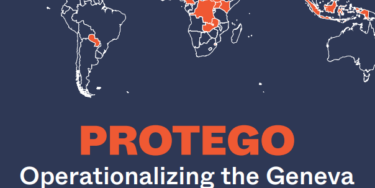Although two-thirds of countries in the world no longer outlaw lesbian, gay, bisexual, transgender and intersex (LGBTI) relationships, same-sex relationships are still illegal in 76 countries. In the recent past, new laws have been passed in Russia, India, Nigeria, Burundi, Cameroon and Uganda and are being contemplated in other countries to further prohibit same-sex relationships or the so-called ‘promotion of homosexuality’.
There is evidence that such new laws precipitate negative consequences not just for LGBTI persons and communities, but also for societies as a whole, including the rapid reversal of key public health gains, particularly in terms of HIV and AIDS and other sexual health programmes, increases in levels of social violence, some evidence of reduced economic growth, and the diversion of attention from sexual and other violence against women and children.
Partly because those arguing in favour of criminalising sexual and gender diversity have made explicit appeals to science, this report examines the extent to which science sup- ports any of the arguments that proponents of these new laws make. Drawing on recent scientific evidence and, where possible, on systematic reviews, the report seeks to pro- vide an up-to-date overview of the state of the current biological, socio-psychological, and public health evidence and assess how this supports, or contests, the key arguments made in favour of new laws. This report considers the following questions:
- What is the evidence that biological factors contribute to sexual and gender diversity? To what degree is the wide diversity of human sexualities explained by biological factors?
- Do environmental factors such as upbringing and socialisation explain the diversity of human sexuality?
- Is there any evidence for same-sex orientation being ‘acquired’ through contact with others, i.e. through ‘social contagion’?
- What evidence is there that any form of therapy or ‘treatment’ can change sexual orientation?
- What evidence is there that same-sex orientations pose a threat of harm to individuals, communities, or vulnerable populations such as children?
- What are the public health consequences of criminalising same-sex sexual orientations and attempting to regulate the behaviour/relationships related to some sexualities?
- What are the most critical unanswered scientific research questions regarding the diversity of human sexualities and sexual orientations in Africa?



